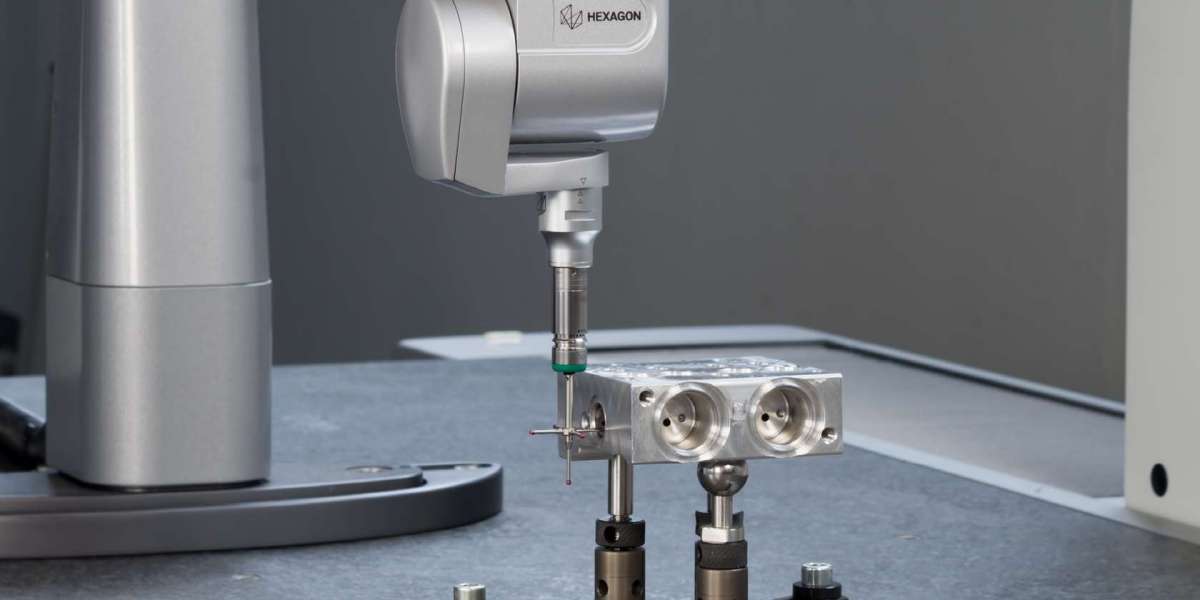Introduction:
In today's continuously changing manufacturing market, accuracy is critical. Whether it's automobile parts, aeronautical components, or medical gadgets, precision is essential.
This is where metrology equipment comes in, acting as the foundation of quality assurance from the lab to the production floor.
Understanding the Metrology Equipment:
Before we get into how metrology equipment is integrated into manufacturing processes, let's first define it. In essence, it is the science of measuring, although it extends beyond simply obtaining measurements.
Metrology equipment includes a wide range of instruments, such as coordinate measuring machines (CMMs), optical scanners, 3D laser trackers, and portable metrology devices. These tools guarantee that every component meets exact specifications and adheres to strict quality requirements.
The Laboratory: Where Precision Begins:
Metrology equipment shines in a controlled setting like a laboratory. Here, careful calibration and validation processes take place, creating the groundwork for precise readings.
High-precision tools carefully evaluate the dimensions, surface profiles, and geometric tolerances of prototype parts or newly manufactured components.
Furthermore, modern metrology software is critical in data processing, allowing engineers to visualize complicated geometries and detect any deviations from design standards.
This rigorous analysis guarantees that each product fulfills the stringent criteria necessary for its intended use.
Transition to the Factory Floor:
However, the ultimate test of metrology technology is its flawless integration into the manufacturing process. Once the prototypes pass the stringent laboratory tests, they must be mass produced without sacrificing quality or accuracy.
Here's where the problem arises: how can we maintain the same degree of precision on a busy production floor as we do in a controlled laboratory environment?
Integrated Metrology Solutions:
Introducing the notion of integrated metrology solutions. Modern manufacturing facilities are increasingly using in-line and near-line metrology equipment, which are strategically located throughout the production line. These systems integrate with robotic arms, CNC machines, and automated assembly stations to provide real-time monitoring and quality control.
For example, in car manufacture, CMMs with robotic arms may perform dimensional checks directly on the production line. This not only speeds the production process, but also detects any deviations early on, avoiding costly rework or recalls later on.
Benefits of Integration:
The advantages of incorporating metrology systems into production are numerous. For starters, it saves cycle times by removing the requirement for off-line inspections, which improves throughput and overall efficiency.
Second, it reduces scrap and rework by quickly identifying deviations from the specified requirements. Finally, it improves traceability by keeping a thorough record of measurements for each item created.
The Future of Metrology Integration:
As technology advances, the future of metrology integration appears hopeful. The emergence of augmented reality (AR) and virtual reality (VR) is changing the way operators engage with metrology data, allowing for intuitive visualization and real-time feedback.
Furthermore, the integration of artificial intelligence (AI) and machine learning algorithms promises to improve metrology systems' predictive capabilities by identifying possible quality concerns before they arise.
Conclusion:
To summarize, seamless integration of metrology systems from the laboratory to the factory floor is critical for guaranteeing consistent quality and precision in manufacturing. In an increasingly competitive market context, producers may remain ahead of the curve by employing sophisticated metrology equipment and implementing creative integration techniques. So, whether in the lab or on the factory floor, rely on metrology equipment to provide precision, efficiency, and perfection at every stage of the manufacturing process.








